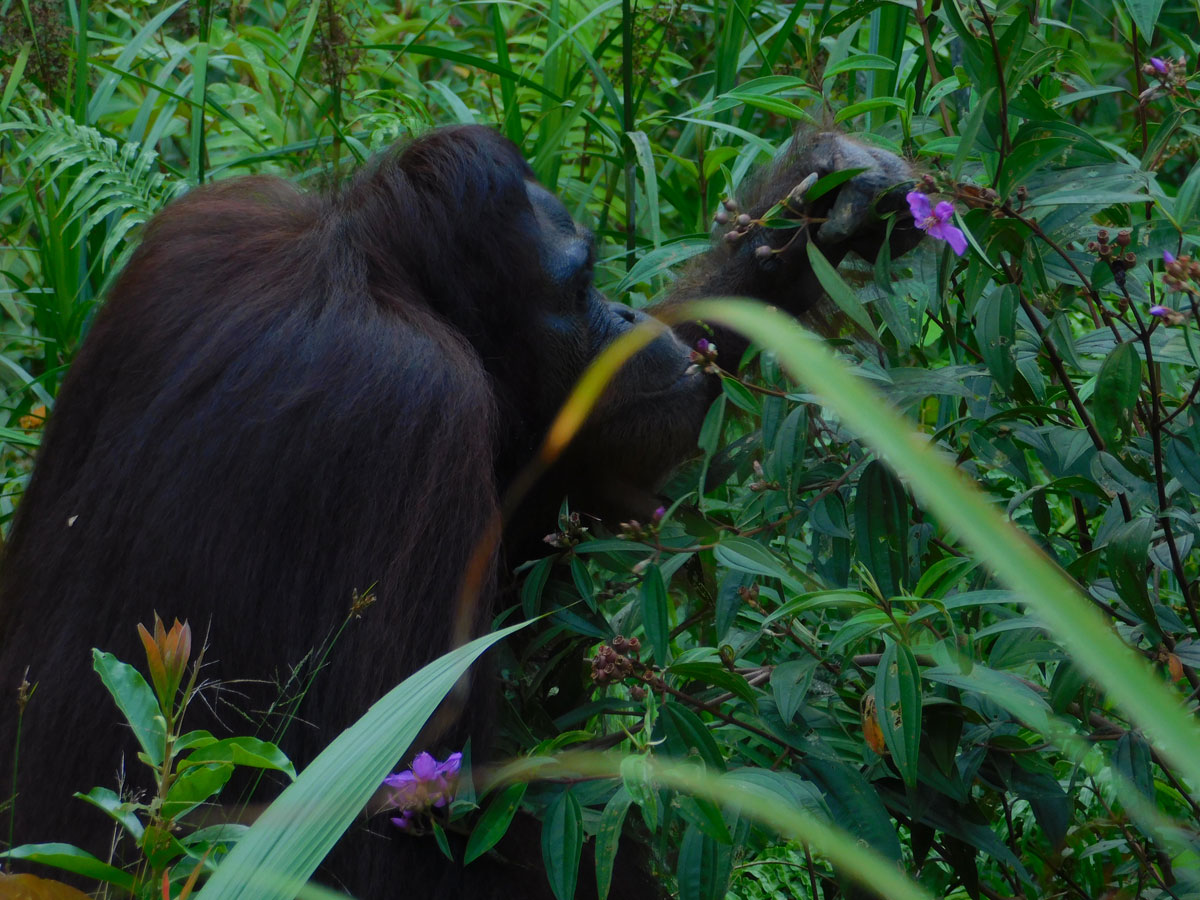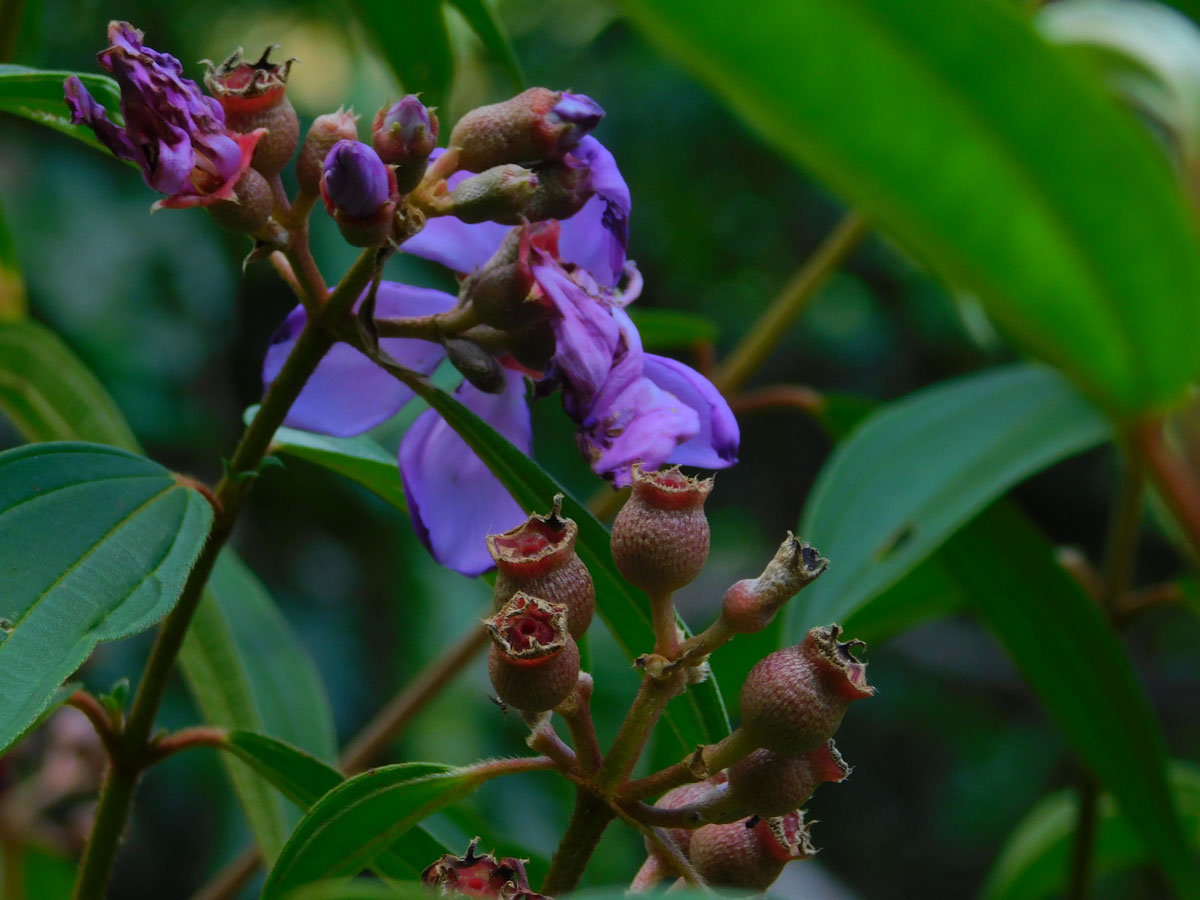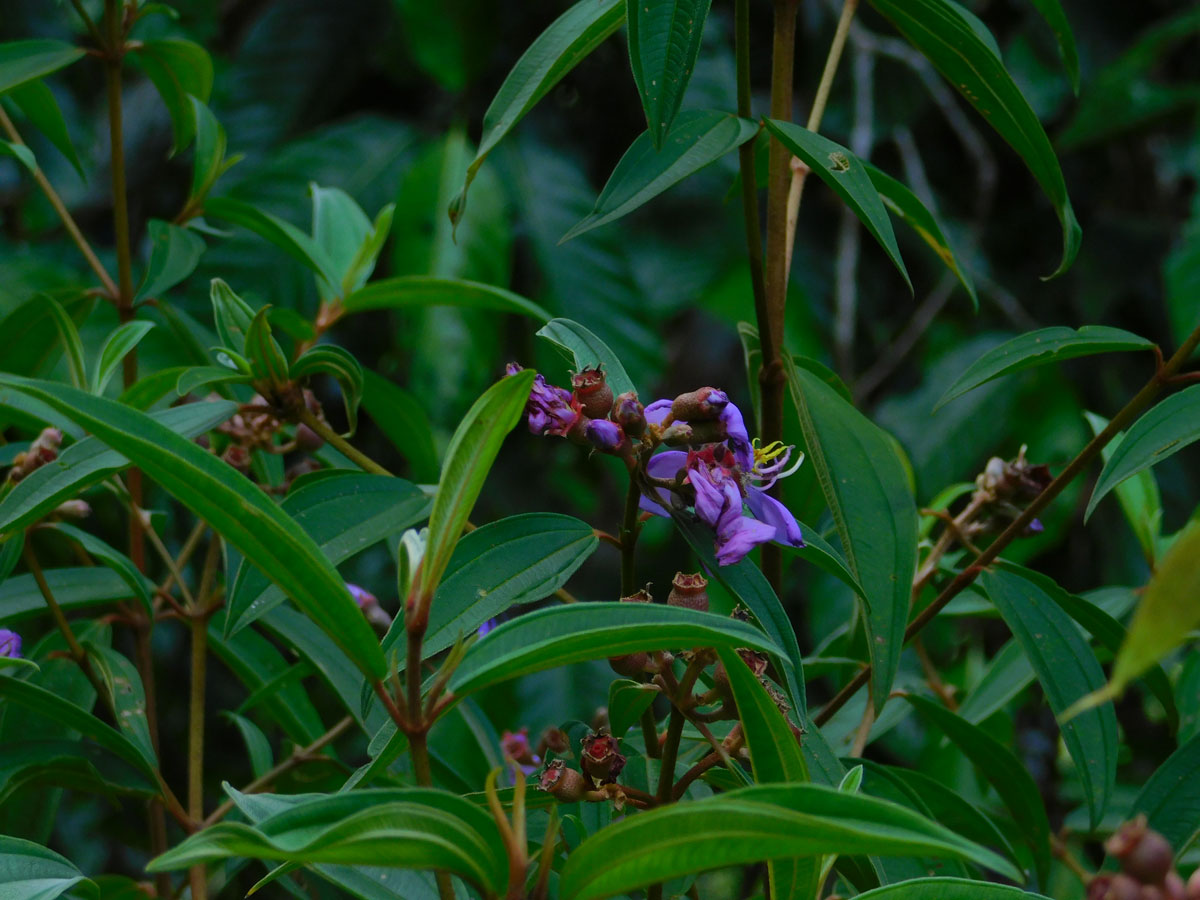A Weed, a Snack, a Wildflower or a Remedy?
Date Posted: May 6, 2024
Text by: BOS Foundation: Hana Iffatalya, Japan Environmental Education Forum (JEFF) Program Internship Student Batch 6, Sompo Environmental Foundation
Wild plants are considered weeds if they can often outcompete other plants by dominating the absorption of nutrients, water, and sunlight. Melastoma malabathricum, a tiny shrub from the Melastomataceae family, is one of the weeds that grows abundantly in Bornean forests, particularly in wet places.
This plant can be found in lowland woods, highlands, and tropical plantation areas. It is widely distributed, spread throughout the Indian Ocean Islands, South Asia, East Asia, Southeast Asia, Australia, and the South Pacific Islands. The overwhelming distribution of this species throughout tropical Asia, including Malaysia, Indonesia, Singapore, Bangladesh, Philippines, and Thailand, demonstrates that M. malabathricum is a very successful plant.
Read more: TASTE-TESTING ORANGUTAN FOOD!
This species has many local names in the countries and cities where it is found; for example, in Malaysia, it’s called senduduk, in China as yeh mu tan, in Indonesia as senggani, in West Borneo as cengkodok, and in Java as kluruk. The average height of the senggani plant ranges from 0.5 to 3 m, but it can often reach 5 m. The senggani plant has oval-shaped leaves with pointy tips.
As depicted in the image above, senggani has lovely purple flowers with stamens of two different colours. Not only that, but senggani blooms are available in three colour varieties: dark purple-magenta, light pink-magenta, and white, which is the rarest type. Senggani fruits are formed like trumpets with a spherical shape (urceolate-globular) and are classed as berries. When the senggani fruit ripens, it turns to dark purple and softens with a slightly acidic taste.
Senggani isn’t always detrimental as a weed, it can also be beneficial to humans and even wild creatures in the forest, such as orangutans. Wild animals in the forest typically consume senggani leaves and fruits. Moreover, senggani is commonly utilised in traditional medicine due to its high flavonoid content, which is said to have antioxidant properties. The flowers, seeds, and leaves can be used to treat atypical vaginal discharge, wound infections, and stomach issues.
Despite being considered harmful in plantation areas, senggani plants play an important role in their native ecosystems. With its numerous benefits, we should also look at senggani as an important resource, but one that shouldn’t be overexploited!




